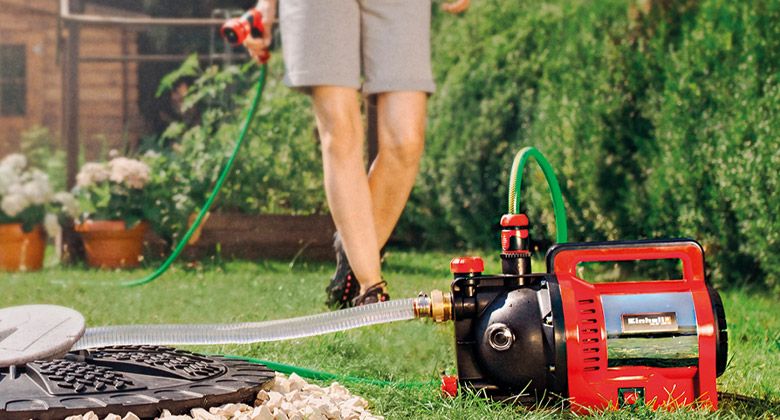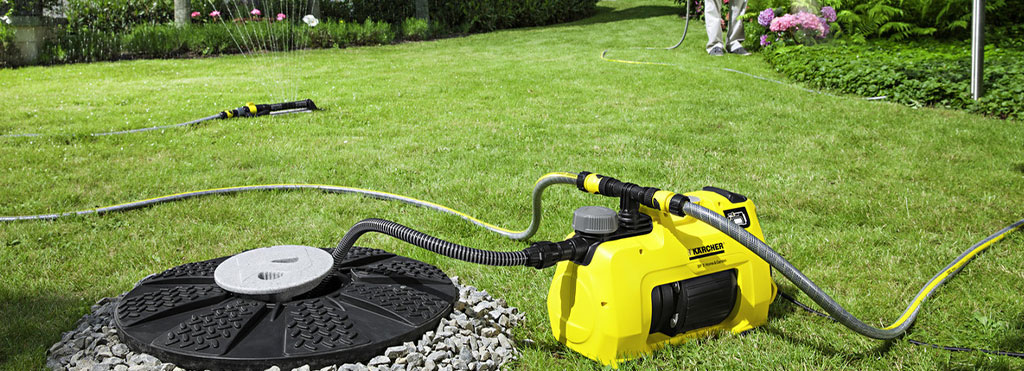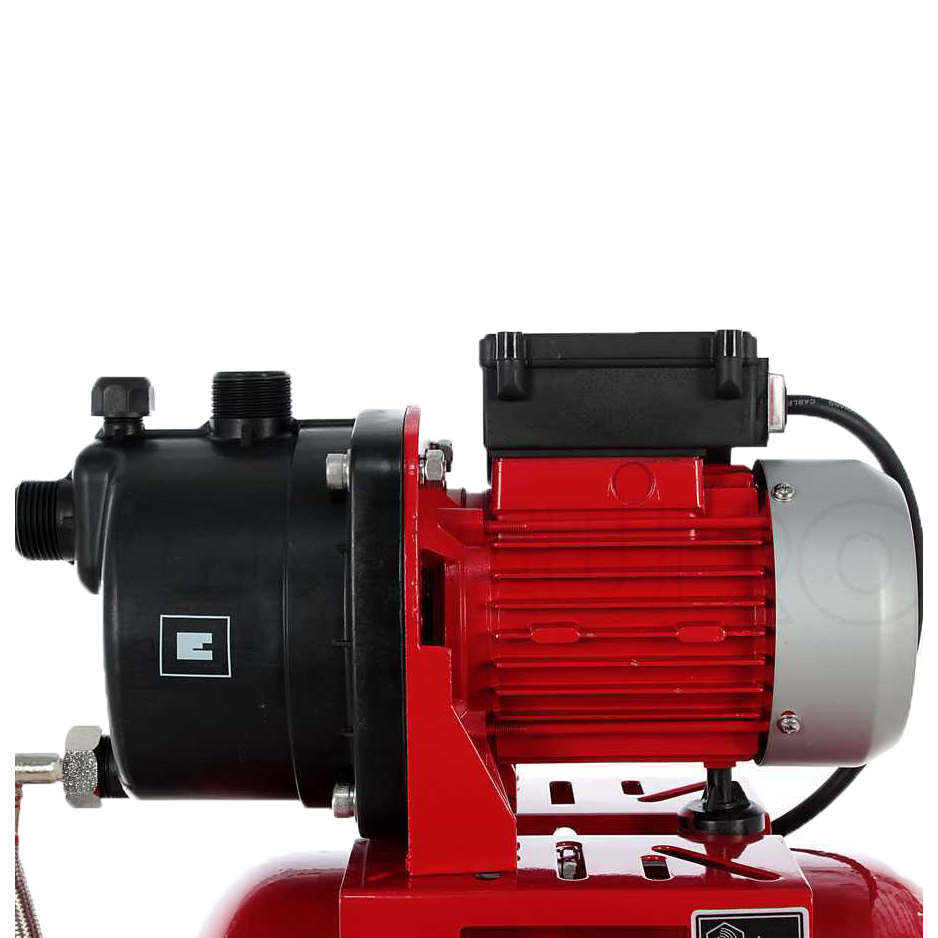The Complete Guide to help you choose the Best Electric Garden Pump
by the Real Experts of Equipment for Irrigation Treatments.
CONTENTS
1. Introduction
The electric pump for garden irrigation, or surface pump, is a practical and efficient tool for small domestic irrigation or for the home water supply; the interesting characteristic of this tool is that it can function using alternative sources such as cisterns where rainwater has been collected or natural water basins.
These electric pumps are ideal hobby tools for non-intensive irrigation of gardens or vegetable patches. As mentioned, in addition to drawing water from the water system, they can also draw water from tanks, barrels, streams or lakes. Obviously, compared to their counterparts equipped with 2/4-stroke engines, the engine-driven water pumps, electric surface pumps require very intensive use.
By being able to use rainwater to irrigate the garden and vegetable plots, these models will avoid wasting water and allow significant savings on domestic water consumption.
These pumps are suitable for transferring water (for example, from a cistern to another) or for “small-scale” surface irrigation in gardens. The suitability for the combined use with sprinklers of different typologies or various real irrigation systems is not guaranteed, (as they require planning by a qualified technician and a number of calculations in terms of flow rate, head lift, pressure, pipe diameters, valves, nozzles, and so on), which may require more specific types of pumps for water systems.

2. Self-priming electric pumps
Surface electric pumps for garden irrigation or for home water supply are self-priming electric pumps. This term suggests that the priming of the water by the pump is automatic.
Garden pumps can be self-priming or centrifugal and require the suction hose to be filled with water in order to be activated. Before the pumps start working, the pipes are filled with air; the liquid will then push the air out and this process is called priming. In the case of centrifugal pumps, this operation must be carried out manually: in order for the pump to be activated, not only the pumping unit but also the suction hoses must be filled with water.
In self-priming electric pumps, on the other hand, this operation is done automatically: the suction hose fills up automatically with water, while gradually releasing the air.

Centrifugal electric pump 
Self-priming electric pump
3. Flow rate, head lift and suction depth
The best electric garden pump must be chosen based on three main parameters: head lift, flow rate and suction depth.
- Suction depth: is the maximum height of water suction, it measures the distance between the water surface and the pump.

- The flow rate is the amount, usually expressed in litres per hour (L/h), of water that the pump draws in; is the mass of water per unit of time that can pass through the pump section. The maximum flow rate is measured at the delivery outlet considering 0 as the head lift. Therefore, depending on the user’s needs, it will be possible to figure out which pump to choose. For example, the larger and more capacious the basin from which the water is to be pumped, the more a high-capacity motor pump is needed to carry out the job in the shortest possible time. The flow rate decreases as the head lift rate increases.
- The head lift indicates the maximum lifting height that the motor pump can cover when transporting water. The head lift basically indicates the ability of the pump to move water from one point to another and can be measured as the difference in metres between the point where the water is drawn and the point where the pump can transport it. This value, generally measured in metres, should be considered in relation to the flow rate. There is essentially an inversely proportional relation between flow rate and head lift, as can be seen from the graph.
The head lift is therefore a value that takes into account the distance that must be reached + the height to which the water must be brought. Let’s take a practical example to understand how to calculate the head lift:

SIMPLIFIED METHOD FOR CALCULATING PUMP HEAD.
10 metres distance is equivalent to 1 metre in height.
For a height of 20 m and a distance of 50 m, an electric pump with a head of at least 25 m is required.
THERE IS AN INVERSELY PROPORTIONAL RELATION BETWEEN HEAD LIFT AND FLOW RATE. At maximum head lift the flow rate is 0. The head lift and flow rate values are displayed in a graph: for each flow rate value, the resulting head lift value can be identified. The curve passing through the points is generally a straight line that can be more or less flat, or vice versa, more or less steep. Pumps with a “flatter” curve provide little head lift variation but large variations in flow rate value; pumps with a “steeper” straight line generate large head lift variations and a more constant flow rate.
4. Main uses
The electric pumps that we have dealt with are mainly intended for hobby use. For professional or even industrial use, it is advisable to move towards other products.
Therefore, electric pumps for garden irrigation find their range of action in home gardens or in the home itself. The intended uses are essentially two:
- irrigation
- house water service

Electric garden pump for irrigation 
Autoclave electric pump for house water service
- As far as irrigation is concerned, this mainly covers the vegetable patch and the garden. The main use of an electric pump is to exploit the water in wells or large collectors, such as cisterns, for the most sustainable irrigation of your garden.
- In the home, and particularly in apartment blocks, autoclave electric pumps are used to supply service water to the home when, for example, the water provided does not have the right pressure to carry out all the domestic work and functions required (service water for appliances such as washing machines, water for the toilet, etc.).
5. Autoclave pumps
The autoclave electric pumps are equipped with an integrated tank that maintains stable water pressure. This machine guarantees low cost service water for the whole house (for washing machines, drains, etc.) It is a very practical product for all families, as it can be used to supply waste water to the home toilet and other household appliances.
The self-priming electric pump with autoclave delivers service water throughout the house automatically, thus guaranteeing considerable savings for families: it allows for low-cost service water in the house using alternative sources such as cisterns or barrels when the electric pump is self-priming.
It is used in many apartment buildings especially when the water supplied by public networks is not at high pressure. An autoclave pump consists of:
tank, usually around 20 litres, which can be filled with water from the public mains or alternative sources of water such as wells or cisterns in the case of a self-priming electric pump;
electric pump, almost always a self-priming one, of a size and power proportionate to the tank to which it is connected;
pressure switch, an automatic sensor that looks like a switch according to the pressures reached;
pressure gauge, to monitor the pressures reached.

Tank 
Electric pump 
Pressure switch 
Pressure gauge
Once the necessary water pressure has been set to flow from the taps in the bathroom, the electric pump will start pumping water. The electric pump is equipped with an internal air chamber which acts as a shock absorber. By switching on the washing machine, opening a tap or flushing the toilet, the pump pressure will drop until the pressure switch automatically re-engages the pump. By closing the tap, the pressure rises again and the electric pump will be stopped again. The function of the air chamber is to regulate the pump, otherwise any loss of pressure, e.g. due to faults in the pipes, would cause the pump to switch on and off continuously.













